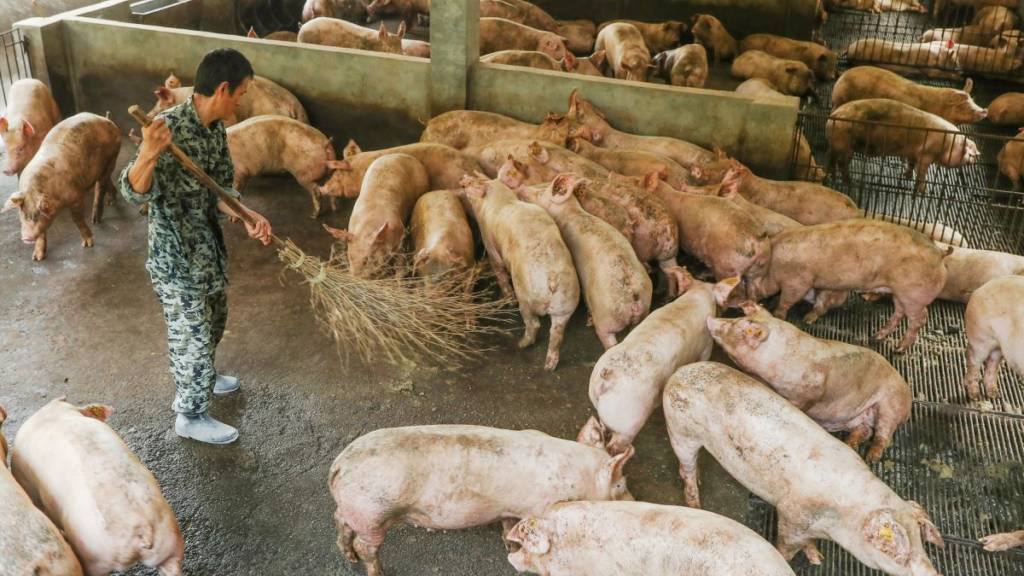The outbreak of Coronavirus has already claimed thousands of lives and lakhs are suffering from the pandemic. The world has come to a screeching halt with almost half of the humanity under lockdown.
There has been lot of discussion about the virus that originated from China and the global community must hold the Asian giant accountable for it. But little discussion about the live wet markets from where the virus originated took place.
In the last few decades, with the rising population, Intensive Animal Farming or industrial livestock production has grown exponentially. With the rise in demand of meat, the companies started production of meat on industrial scale, just like any other goods or service- without any empathy for the living beings.
Today, meat is a major diet in countries around the world. The average per meat consumption in the United States is 120 kg per person which means an average American adult consumes around half kg meat daily. The data for most of the western countries, especially those follow Abrhamic religions, is similar. On the other hand, meat consumption in South Asian countries like Indian, Bangladesh, and Bhutan is one of the lowest, at less than 5k kg per person in a year.
As per an article in Scientific American, industrial animal farming is one of the major reasons behind the virus induced pandemics. “The conditions in which we often farm animals today—crowding tens of thousands of animals wing-to-wing or snout-to-snout—serve as “amplifiers” for viral pandemics,” argued the article by Paul Shapiro, author of Clean Meat: How Growing Meat Without Animals Will Revolutionize Dinner and the World, and the CEO of The Better Meat Co.
H1N1 swine flu in 2009 and H5N1 bird flu outbreak in 1997 have originated from pig confinement in the US and chicken farm in China respectively. Previously, India and China have reported outbreak of bird flu from chicken farms.
American Public Health Association journal, in an editorial argued that, “It is curious, therefore, that changing the way humans treat animals—most basically, ceasing to eat them or, at the very least, radically limiting the quantity of them that are eaten—is largely off the radar as a significant preventive measure.”
The scientists have raised the issue of industrial animal farming causing pandemics for at least last two decades, but, so far, the governments have taken no action. In 2012, Robert S. LAWRENCE, professor of Environmental Health Sciences, Health Policy, and International Health at the Johns Hopkins Bloomberg School of Public Health, and founding director of the Center for a Livable Future, wrote an article in The Atlantic arguing Industrial farming could facilitate ‘pandemic’ swine flu but the governments across the world took no action.
The industrial farming industry operates in highly unregulated environment, and therefore, even basic hygiene measures are nit adhered by animal factories. And today, we are paying for the lax attitude of the government and the people in general.
In 2015, writing for The Gaurdian, Yuval Noah Harari, one of the most respected writers of Human history, argued, “The fate of industrially farmed animals is one of the most pressing ethical questions of our time. Tens of billions of sentient beings, each with complex sensations and emotions, live and die on a production line.”
Despite the repeated call by the scientists, historians, journalists, and intellectuals, the governments in western countries did not made any attempt to regulate the industrial animal farming.
Even the Coronavirus outbreak took place from Wuhan wet market, which is one of the rare places were bats, pangolins and humans are found at one place, thus resulting in the outbreak of the virus. Pangolins form an endangered species, illegally traded and face the risk of being eaten to extinction.
The menu of Wuhan’s wet market includes the likes of tiger, camel, snakes, rabbits, bats, bears, foxes and many more varieties of exotic wildlife. The wet markets of China were emboldened by the Communist Party’s decision in 1998 to term wildlife as “resources owned by the state” and protected people engaged in the “utilization of wildlife resources”.
“These animals have their own viruses,” said Hong Kong University virologist professor Leo Poon. “These viruses can jump from one species to another species, then that species may become an amplifier, which increases the amount of virus in the wet market substantially.”
Therefore, until the insatiable desires of humans to eat meat is there, humanity is at risk from various viruses that originate from these animals.
